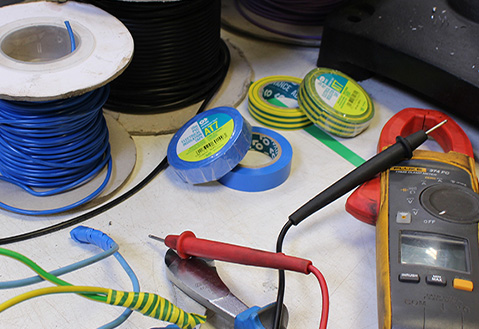Self-Amalgamating Tape and Its Temperature Resistance
Self-amalgamating tape, also known as self-fusing or self-bonding tape, is a remarkable innovation in the realm of adhesive materials. This unique type of tape consists of a polymer material that, when stretched and wrapped around an object, adheres to itself without the need for any additional adhesives. The main appeal of self-amalgamating tape lies in its versatility and strong bonding properties, making it widely used in various applications, from electrical insulation to plumbing repairs. However, one aspect that often requires careful consideration is its temperature resistance and performance under varying thermal conditions.
Self-Amalgamating Tape and Its Temperature Resistance
In electrical applications, for instance, self-amalgamating tape is primarily used for insulating wire splices and connections. The ability of the tape to withstand high temperatures is critical, as electrical components can generate considerable heat due to resistance. When used properly, the tape provides a secure insulating layer that prevents short circuits and other electrical failures, even in systems operating at elevated temperatures. Additionally, when applied, the tape forms a waterproof seal that protects against moisture and environmental factors, further enhancing its usability in challenging conditions.
self amalgamating tape temperature

In plumbing applications, self-amalgamating tape serves as an effective solution for sealing leaks in pipes. Given that water temperatures can vary significantly, having a tape that performs well across a wide temperature spectrum is essential. This self-fusing tape is particularly beneficial in emergency repairs, as it can be applied quickly and easily, providing a temporary yet reliable seal until a more permanent solution can be achieved.
However, while self-amalgamating tape can handle a wide range of temperatures, it is vital for users to understand its limitations. For example, prolonged exposure to extremely high temperatures can lead to the material degrading over time. This degradation can result in a loss of adhesive properties and reduce the effectiveness of the tape. Therefore, for applications involving consistent exposure to high heat, it is recommended to select tapes engineered specifically for those conditions or to limit the duration of exposure to elevated temperatures.
Moreover, temperature can affect the tape's application process; colder environments could cause the tape to become less pliable and more challenging to work with. It is advisable to store the tape at room temperature before use and warm it up slightly if applying it in particularly cold conditions.
In conclusion, self-amalgamating tape is a versatile and reliable solution for various applications, particularly in situations where heat and cold resistance are crucial. Its ability to create a strong, waterproof seal without the need for adhesives makes it an invaluable tool in many industries. However, users must be aware of its thermal limitations and ensure proper application to maximize its performance. Whether used for electrical insulation, plumbing repairs, or automotive needs, understanding the temperature capabilities of self-amalgamating tape can significantly enhance its effectiveness and longevity.
-
XIANGFAN Rubber Tape-Ultimate Solutions for All Your Insulation NeedsNewsJun.24,2025
-
XIANGFAN Rubber Tape-Protection for Industrial and Residential ApplicationsNewsJun.24,2025
-
XIANGFAN Rubber Tape: Superior Safety and Sealing for Demanding EnvironmentsNewsJun.24,2025
-
XIANGFAN Rubber Tape: Reliable Solutions for Every Electrical ChallengeNewsJun.24,2025
-
XIANGFAN Electrical & Industrial Tape: Powering Reliability Across IndustriesNewsJun.24,2025
-
XIANGFAN Electrical & Industrial Tape: Excellence in Every ApplicationNewsJun.24,2025
